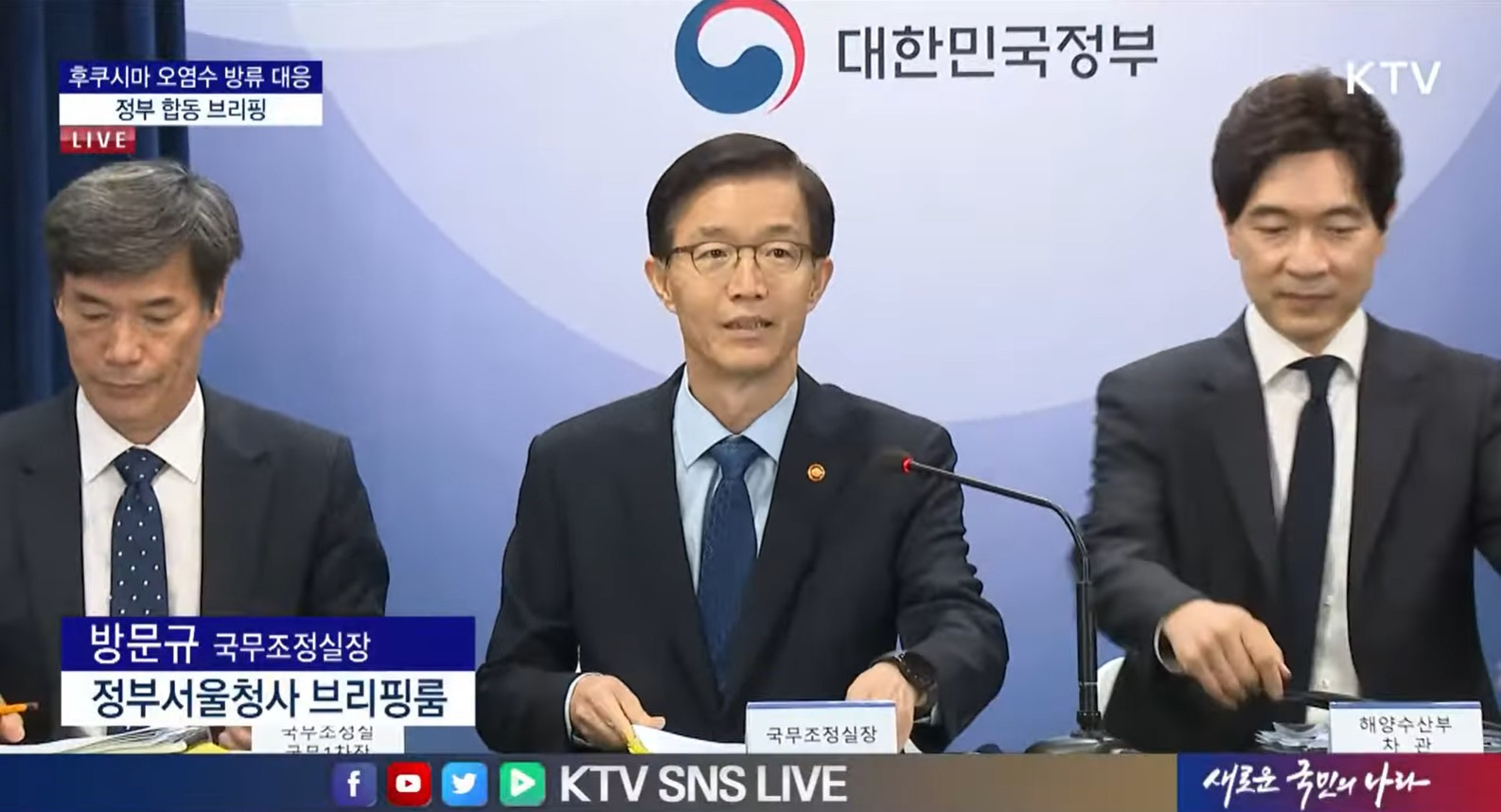Bang Bang-gyu, head of the Office for Government Policy Coordination, explained measures to strengthen marine and fishery product safety management
In the future, the government plans to drastically expand the radioactivity monitoring peak in our waters and conduct monthly radioactivity surveys in the high seas close to Japan.
Bang Bang-kyu, head of the Office for Government Policy Coordination, announced measures to strengthen safety management for our marine and marine products at a daily briefing on the response to contaminated water in Fukushima, Japan on the morning of the 7th.
The Korea Atomic Energy Research Institute (KAERI) and the Korea Institute of Ocean Science and Technology (KIOST) conducted ocean diffusion simulations and announced the results in February.
Fukushima is located on the eastern side of Japan, that is, on the Pacific Ocean side, so even if the contaminated water is discharged, it travels through the North Pacific region via the Kuroshio Current to Canada and the United States, and then largely circulates through the Pacific Ocean.
In this process, it is diluted in a vast amount of Pacific seawater, and as a result of studies by various countries and simulations by our institution, the time to enter and affect our waters ranges from about 4 to 5 years to 10 years at the longest, and the effect of radioactivity such as tritium is It was predicted to be scientifically insignificant as less than 1/100,000 of the average concentration in domestic waters.
The Nuclear Safety and Security Commission and the Ministry of Oceans and Fisheries have been monitoring radioactive concentrations in the Korean sea since 1994 and 2015, respectively.
As a result, the radioactivity concentration in domestic waters was similar to that before the 2011 nuclear power plant accident, and no significant effect was observed to date, and it was confirmed that there were no newly introduced radionuclides.
In order to further strengthen the safety management foundation of our waters, the government plans to drastically expand the number of radiation monitoring stations from the current 92 to 108 to a total of 200, and conduct monthly surveys at eight points in the high seas close to Japan.
In addition, in line with the summer vacation season, it was decided to strengthen radiation checks on beaches.
Emergency investigations before the opening of 20 representative beaches across the country have already been completed and all have been confirmed to be safe, and from this month, inspections will continue every week.
Ballast water exchange measures outside jurisdictions, currently applied only to two prefectures, including Fukushima and Miyagi prefectures, will be expanded to 6 prefectures in eastern Japan, and it will be decided to conduct a full inspection of ballast water radiation on ships subject to exchange measures through mobile measuring equipment. .
In addition, as a measure for safety management of aquatic products, the target number of radiation tests for domestically produced aquatic products was also decided to more than double from 4,000 last year to more than 8,000 this year.
Since the nuclear power plant accident in Japan in 2011, as a result of radioactivity tests on 76,000 cases of marine products produced and distributed in Korea, not a single case has been found unsuitable.
In the future, at major commerce sites that account for more than 80% of the volume of fishery products caught, radioactivity tests will be conducted before distribution of fishery products to ensure that only safe seafood is distributed.
For aquaculture products, radioactivity tests will be expanded to 6,000 cases before shipment, focusing on the top 15 breeds that account for 98% of the total aquaculture production for representative farms by region and breed.

Noryangjin Fisheries Wholesale Market, Seoul. Credit: William Warby, Flickr https://flic.kr/p/2d2Q48M (CC BY 2.0)
For salt farms, 150 representative salt farms, which account for 50% of the total sea salt production, will be inspected for radiation before shipment, and sea salt already produced and stored will be inspected by a private inspection agency.
For imported seafood, it plans to inspect all 20,000 seafood handling companies at least three times for 100 days immediately after release by mobilizing all available personnel, including the Ministry of Maritime Affairs and Fisheries, local governments, coast guards, and honor guards.
Regarding the import regulation of marine products from Fukushima, the import of all marine products from 8 prefectures and 27 agricultural products from 15 prefectures, including Fukushima, is currently prohibited.
Bang Bang-gyu, head of the Office, said, “The import restriction measures introduced by the government in September 2013 were implemented to protect the Korean people from high-concentration radioactive materials that leaked into the sea uncontrolled after the Fukushima nuclear power plant accident in 2011. This is an action unrelated to the release under the treatment plan,” he stressed.
“We emphasize once again that the government plans to maintain import restrictions until all citizens are relieved,” Bang said.
“There is no change in the government’s policy that contaminated water should be disposed of in a way that is safe from a scientific point of view and meets international laws and standards,” he said.
Office for Government Coordination
Source: Policy news, link


Comments